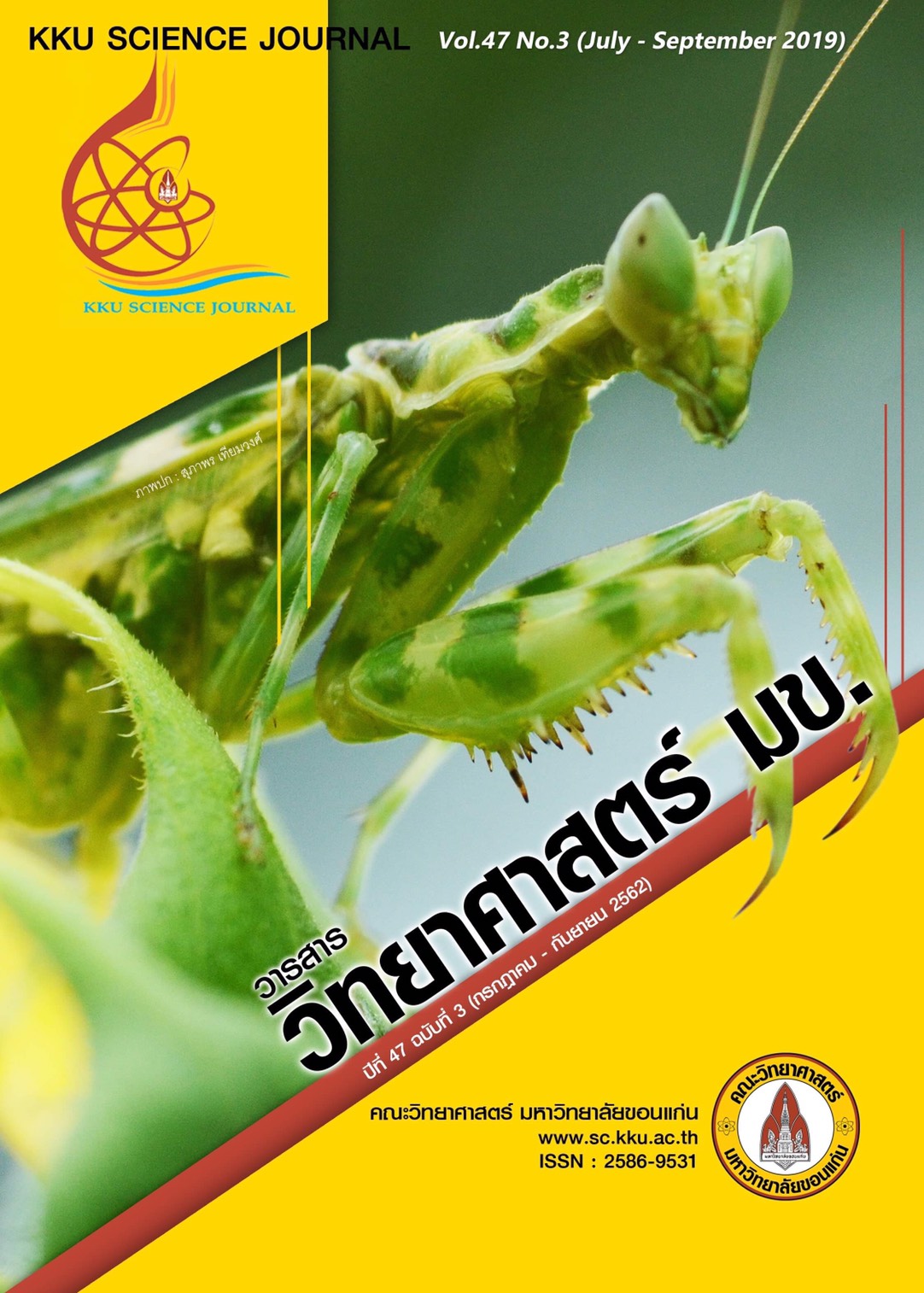Application of Acidic Electrolyte Water for Disinfection In Water Supply Treatment
Main Article Content
Abstract
The objectives of this study are to compare the disinfection efficiency of acidic electrolyte water and chlorine in form of calcium hypochlorite, and to determine optimal conditions including disinfectant concentration, contact time, and pH in water supply treatment process for community. The results indicated that, to achieve 100% of disinfection using acidic electrolyte water, the optimal concentration, contact time, and pH were 2.5 ppm, 10 minutes, and 7, respectively. In case of calcium hypochlorite, it was found that the optimal concentration, contact time, and pH of calcium hypochlorite were 5 ppm, 30 minutes, and 7, respectively. After the disinfection process, it was found that there is no residual free chlorine left in the acidic electrolyzed water. Therefore, trihalomethane was not formed in this case. In contrast, the residual free chlorine was found when using calcium hypochlorite as disinfectant. The residual free chlorine is vital for water supply distribution system. Application of acidic electrolyte as disinfectant therefore is more suitable for bottled drinking water or small scale of water quality improvement unit rather than for water supply system.
Article Details

This work is licensed under a Creative Commons Attribution-NonCommercial-NoDerivatives 4.0 International License.


